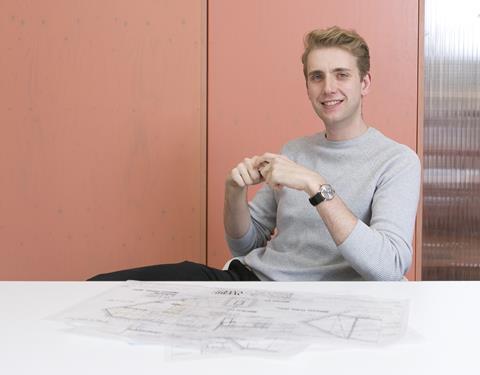Artificial intelligence is revolutionising workflows across industries, but its value lies in complementing human expertise rather than replacing it. Dan Cole explains why maintaining control is key to innovation and creativity

What do computational engineering and building furniture have in common? Not much, except that I’ve been doing both recently, which got me thinking about how our approach to each has changed a lot over the last 80 years or so.
Imagine you’re a carpentry apprentice in the 1920s. You go to the builder’s merchant and pick up everything you need to get started – a set square, hand saw, spirit level, hammer, chisel, and a sharp pencil. You mark out the required cuts and get to work.
However, cutting with the hand saw is an arduous task. Not only does your arm begin to ache, but keeping it in a straight line is harder than you thought. You power through and, over the years, with a lot of practice, learn to perfect the skill.
At some point in the middle of your career, these shiny new machines called electric circular saws come out. They seem strange, complicated, and alien, but your competitors using them are suddenly able to undercut you due to their improved efficiency, so you have no choice but to give it a go.
While you forget you need to plug it in every now and then, you’re suddenly able to cut panels at five times the speed, and the cut edges are a little neater, saving you time on sanding later. Most importantly, despite the power of the electric motor, you’re still the one in control.
After having wielded electric saws throughout the second half of your career, another new technology emerges: a Computer Numerical Control Machine (CNC machine for short). It’s intimidating. It’s vast. Wires and buttons everywhere. Hardly anyone owns one, and even fewer people know how to operate it.
However, for the people that do use it, it cuts wood quicker and more precisely than any human ever could. With the thought of having to retrain yourself for the second time in your life, you consider finally giving in, accepting defeat, and hanging up the tool belt for good.
There’s no doubt AI will become a part of all our lives in the near future (if it isn’t already)
Now, imagine the same journey, except you’re a professional in the architecture, engineering, and construction industry. Mental arithmetic is the hand saw, computers are the circular saw, and AI is the CNC machine. What’s important to remember is that they are all tools – some are better than others, but you are the carpenter.
You have the expertise and knowledge of how to craft beautiful mid-century dining tables. No matter how efficient the tools are, they can’t build furniture by themselves. In fact, without any of your input, they don’t do anything at all.
AI is equally as intimidating to us as a CNC machine is to a traditional carpenter, but that doesn’t mean we shouldn’t use it. It also doesn’t mean that we should rely on it to take over every aspect of our jobs.
Going back to the carpentry example, both the tools and the craftsmen have their separate skills. When used together, those skills work synergistically, resulting in a process that utilises the efficiency of technology while retaining the objectivity and creativity that only a human mind can bring.
Image generation and natural language processing give a good façade of producing original content but intrinsically can only reproduce information that has been fed to it before. So, a world in which we solely rely on them results in a world where ideas become stagnant – and I don’t think any of us want that!
A much brighter outlook on the future is a world where we use the tools where they add the most value. Taking out the mundane in our professional lives frees us up for the more exciting and enjoyable parts. Imagine how much longer we could spend on generating ideas if we could cut down the time spent on the repetitive, boring stuff?
There’s no doubt AI will become a part of all our lives in the near future (if it isn’t already), but we need to make sure that we retain control and don’t become a slave to its output. Remember, you are the master carpenter.
> Also read: ‘No turning back’ says Oki as RIBA report shows 41% of UK architects now using AI
Postscript
Dan Cole is an associate at Webb Yates
















No comments yet